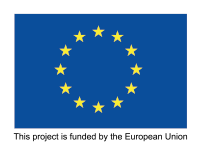
However, it would be a mistake to confine “advocacy” to the last 50 years. “Advocacy” as a word comes from the French term “avocat”, meaning of “lawyer” and the “avocat” also comes from Latin word ‘advocatus’ which means “to call out for support”. The origins of advocacy date back to ancient Rome and Greece and Cicero and Cease are considered as one of the greatest personalities, in terms of advocacy.
Advocacy is an activity by an individual or group that aims to influence decisions within political, economic, and social institutions. Advocacy includes activities and publications to influence public policy, laws and budgets by using facts, their relationships, the media, and messaging to educate government officials and the public1.
More information on advocacy can be found at “The Culture and Creativity website” which was developed within the framework of an EU Programme in 2015.
1.https://en.wikipedia.org/wiki/Advocacy
Lobbying is a form of advocacy, focusing to influence the law and decisions. It aims to influence local, national or international institutions where decisions are taken by representatives. In other words, lobbying attempts to directly influence the decision makers. Although there is a confusion between the concepts of advocacy and lobbying, lobbying can be considered as a part of advocacy efforts. In brief, advocacy does not only target decision makers, it is a long-term course and consists of many other aspects and components.
Campaigns can be described as a series of actions or activities aimed at a wide audience for building support to provide remedy to a problem or an issue. It can be carried out to influence decision makers with broad public support and participation. In other words, a campaign is also a set of activities in a certain period of time, aimed at both behavioral and policy changes by mobilizing the large masses for a specific advocacy purpose.
Campaigns should have a decent planning, considering the implementation capacity and;
- The short and a clear message should be conveyed throughout the campaign,
- A call action needs be developed to mobilize the wide audiences,
- It is recommended to be creative and noticeable for the message, visual(s), applications and media of the campaign for attracting the attention of the broad public.
Policy Proposal can be defined as making recommendations to change a law, regulation, or government service with the intention of offering a better life for people.
It’s recommended to use a plain language in a policy document and following information should be provided;
- What the problem is
- Why the problem matters
- What the solution is
- What type of significant change is required in law, regulation, and government practices
In other words, a policy document consists of 4 main parts;
- The part where the problem is stated
- The part where the importance of the problem is explained-emphasized
- The part where the proposal for solution is presented
- The part where the solution is linked to the legislation
While preparing a policy document, a proper screening, analysis and in-depth research should be conducted for the problem and solution. Moreover, references should be cited so that it’s clear that the effort have been made. And the most important point is the use of headings that can briefly summarize the issue and describe the problem at once.
Key advocacy tools include;
- Lobbying,
- Organizing, creating networks,
- Education and awareness raising,
- Monitoring and shadow reporting,
- Press/Media studies,
- Mobilization.
- Identification of the problem that need to be solved through advocacy activities (Problem Analysis),
- Problem analysis in regards to context, structure and culture (Triangle Analysis),
- Developing solutions to the problem analyzed,
- Established the advocacy strategy based on the solutions developed
- To defend communities from adverse changes,
- To achieve widespread, long-term and sustainable changes for the benefit of communities, especially for the benefit of the disadvantaged groups,
- To ensure the responsibilities of governments and decision makers at the level of local, regional, national and international to citizens are met and rights are fully respected
- To strengthen democracy by encouraging the engagement of citizens and civil society organizations in the policy-making process

